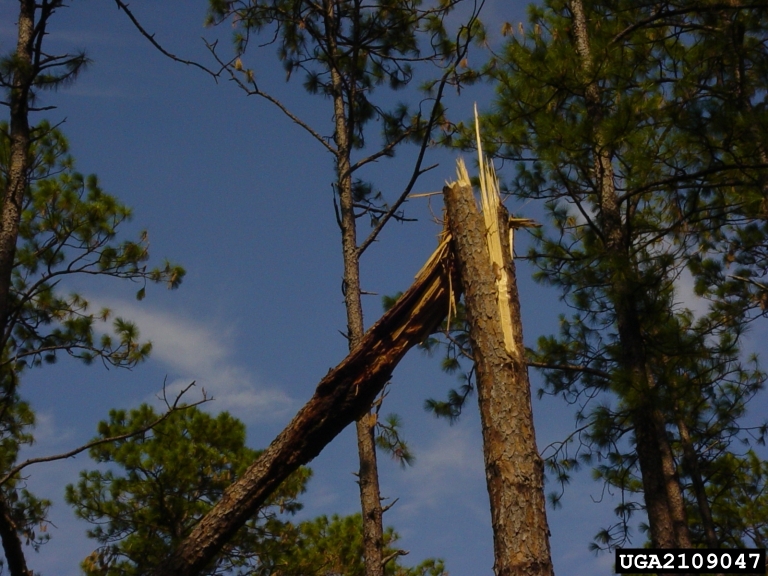Often a storm will leave a tangled mess of trees that require patience and special attention to clear safely and efficiently.
A while ago I wrote an article about my efforts to process three trees that had fallen into a pile following a windstorm. This past summer, a storm swept through the area that caused more widespread and devastating damage to area forests than the little storm that hit our property. I have talked with affected landowners who report their entire woodland is now on the ground in a tangled mess. Being the industrious folks we are in this region, they wasted little time in getting to work cleaning up their land.
Working in a storm damaged forest has many hazards, even months after the storm swept through. Branches that have been broken off and are lodged in treetops could fall at any time. Trees on the ground have powerful forces working on them that can cause them to roll or spring upwards if shifted the wrong way. My advice to folks doing cleanup work is to wear a helmet and don’t work in windy conditions. I also tell them this is no time to be learning how to run a chainsaw, and to get some help from someone with experience working under these conditions.
Many of these landowners have two goals in mind when deciding upon how to go about their cleanup efforts. Their first goal is to restore the woodland access they had before the storm hit, meaning clearing trails and roads. Their second goal is to get as much value out of the wood as possible, either by selling the timber or processing into firewood.
I have been telling folks to add two more goals to their cleanup work: Manage for forest health and try to meet the overall objectives you have for your property. The first is something many landowners should be trying to do anyways, but this situation requires some different criteria to work by.
Storm damaged trees need to be evaluated according to how well they will survive the damage that has been inflicted upon them. The decision to harvest or leave damaged trees should be based on the amount of crown loss and structural damage. Trees that still maintain 50% or more of their crown can be left to grow as they will most likely recover. If less than 50% of the tree’s crown remains, the tree may die over a period of a few months or a few years. Trees with splits and/or fractures to the main trunk are also good candidates for removal.
Trees are often bent over or uprooted by windstorms. If they are completely uprooted, they will not recover and should be removed if your goal is to salvage the trees’ volume and value. It is a good idea to leave the stump and roots in place as they create great habitat for wildlife. Partially uprooted trees or those that are bent over can be left standing if their crowns are still green, if they have no cracks or fractures, or if they are less than about 15 feet tall.
A dramatic change to a forest caused by windstorms and other factors will force affected landowners to revisit the plans they have developed for their property. The change in conditions will necessitate a change in any harvesting timetable that had been in place. Conducting a salvage harvest as soon as possible following a storm is a good way to get the most monetary value out of downed trees.
Short terms goals will undoubtedly need to be changed to better fit the current conditions. It can be decades before the forest returns to the same state that existed before the storm hit, so this needs to be a time to consider alternative goals for the property. For example, a goal of managing for mature forest conditions that attract interior songbirds and supply a steady stream of income from timber harvests will not be possible for a while. Instead, a plan to create conditions that favor fast growing, sun-loving trees and attract associated wildlife would be an appropriate alternative. These kinds of stands will eventually become the mature forest that meets the original goals.
A big storm can cause a great deal of heartache for landowners who have been nurturing their forest for many decades. It is not easy to see the trees you planted, nurtured, pruned, thinned around, and enjoyed sitting under now in a broken tangle on the ground. The best thing to do is remember why you own your land and always work toward achieving those goals.
